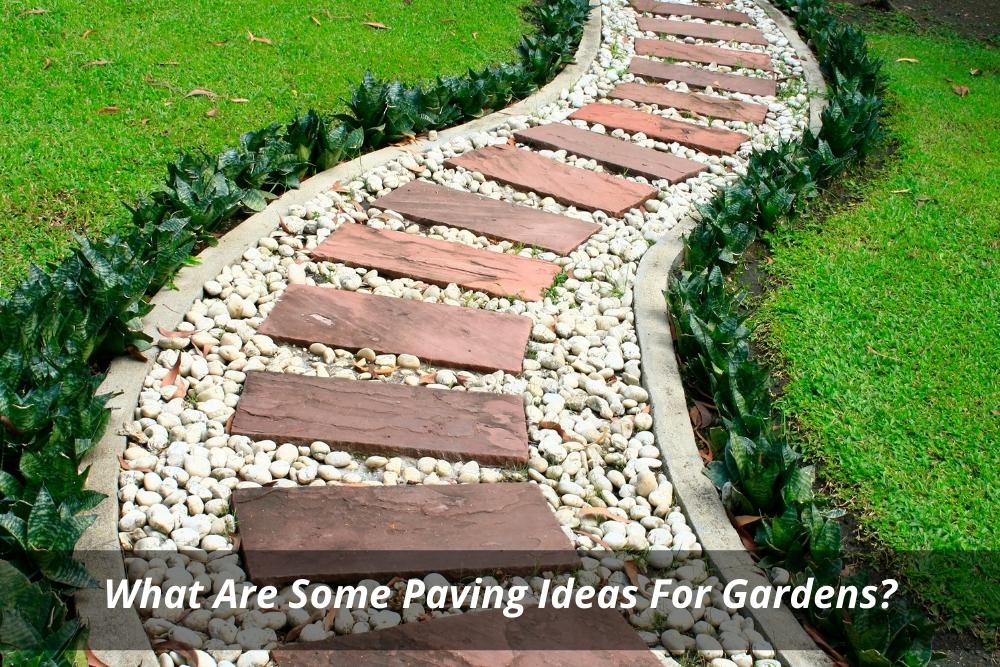What Are Some Paving Ideas For Gardens?
Do you want to know what are some paving ideas for gardens? There are a number of types of materials that can be used for garden paths and walkways. The main choices include brick, cobblestone, flagstone, wood and concrete block pavers. These options offer varying characteristics such as durability, strength, appearance, ease of installation and cost of paving.
Asphalt is often considered the material of choice for paver paths because of its availability and low price point compared to other alternatives. Asphalt also has superior compressive strength and flexibility. While asphalt does not require grouting or waterproofing, it must be sealed periodically to prevent cracking and erosion. If your soil is prone to acidity, then sealing should occur every two years.
Concrete block pavers may be used in smaller areas where you need a more natural appearance. They can also be used indoors when setting on a deck and patio. This tile-like material comes in many colours and patterns.
Due to their size, these pavers cannot be broken into individual pieces for use around trees or shrubs. For larger projects, concrete block pavers can be combined with stone, bricks and mortar.
The best good ideas for large gardens include using brick pavers over an existing lawn. Brick pavers come in a variety of sizes, shapes and heights. Some brick pavers are made out of clay while others have natural stones embedded within them. With this method, you can add colour and texture to your landscape design without completely removing grass from the area.
For an organic look, consider stone pathways. Stone pavers allow dirt to penetrate the surface creating a healthy environment for plants. However, when installing this type of path, you will need to ensure there is enough space between the pavers so the water drains away.
If you’re looking to create a paved pathway that blends in with the surrounding landscaping, try flagstone. Flagstones vary in thickness, shape and finish. Like brick, flagstone is available in various shades and textures.
It’s easy to install and maintain, making it a great option for small projects. You can install flagstones by yourself or hire a professional contractor.
Brick pavers are widely used and popular due to their durability and visual appeal. They are made up of interlocking tiles that are designed to look like actual bricks. Brick pavers are suitable for both outdoor and indoor spaces.
When installed correctly, they won’t crack, chip or fade. Depending on the design, brick pavers can range in height from 1 inch to 6 inches high.
Flagstone is another common choice for paving edifices. Like brick and stone, flagstone varies in shape, size and colour. It is usually laid in one continuous piece and requires no special tools for installation. Although it looks similar to brick and stone, it isn’t as durable.
When selecting paving ideas for garden styles, it’s important to select products that fit into your budget and suit your needs.
What are the benefits of Paving in gardens?
Paving in gardens offers multiple advantages such as:
- Increase the beauty of your garden
- Reduce noise pollution
- Control animal movement and pests
- Improve drainage
- Provide safety
- Prevent weeds growth
- Addvalue to home
- Make gardening easier
- Create a sense of security
- And much more…
How To Install Pavers In Your Garden?
You have selected the perfect location for your new paver walkway. Now you must do everything possible to make sure that this part of your yard remains beautiful and attractive. Here are some tips on how you can successfully complete the task at hand.
- Remove all weeds from the area
- Prepare the sub-soil properly
- Mix gravel and sand together to form a base
- Pour concrete mix onto the prepared area
- Spread the mixture evenly across the entire area
- Let the concrete dry and harden
- Use the paver jig to place the pavers in straight lines
- Smooth out any uneven areas with a trowel
- Place stones around the edges of the pavers
- Fill any gaps with additional mortar
- Wait for the mortar to dry
- Level and smooth out the pavers with a hammer and chisel
- Apply stain to the pavers if desired
- Water thoroughly to set the cement
- Enjoy your new paver walkways!
In order to keep your garden space looking fresh and clean, it’s important to always have a plan in mind before you start planting and growing things. Whether you’re starting from scratch or already want to change things up, having a good plan for your garden can help it grow and thrive.
The best way to do this is by following these five steps
Step One – Determine What You Want
The very first step in creating a garden plan is to decide what exactly you want it to be. This includes where you want it placed, what kind of plants you’d prefer, and what type of maintenance would you need. Once you’ve thought about all of this, it’ll be much easier to determine what you need to get started.
Step Two – Do A Quick Inventory Checklist
Once you know what you want your garden to include, it’s time to take an inventory check. There are many ways you can do this, but the most basic method is to ask yourself a series of questions regarding your space and whether you have enough room to accommodate your vision.
For example, do you have enough space to add seating areas to your backyard? Are there places where you could build raised beds? If so, this might not be the right spot for them, unless they are meant for sitting purposes only. With these two things taken care of, you can then move forward with the next few questions.
Step Three – Get Ideas
Now that you’ve gotten a better understanding of what you want to see in your garden, it’s time to look for inspiration. You don necessarily have to limit yourself to just one source of inspiration. Instead, try checking out books, magazines, websites, Pinterest boards, videos, etc. It doesn’t matter as long as you find something that speaks to you.
Next, you should think about what kind of style you’d like to incorporate into your garden design. For example, does it lean towards modern and minimalist, traditional and ornamental, funky and colourful, etc.? Again, you may not be able to do everything at once, but when choosing which direction you’re going to go in, make sure that it matches your current lifestyle.
Step Four – Create A Draft Plan
After getting all of your resources on hand and making sure that you understand the style that you want to achieve, it’s time to create a draft plan. This will be an overview of how you want your garden to appear. In other words, it’s a rough sketch of what you want to happen in your backyard.
To do this, draw or write down all of the elements that you feel would work well together. Make a list of everything from the size of the trees you’d like to have, to the size and shape of the raised beds you’d like to build.
Step Five – Adjust And Finalize Your Garden Design
Although this is the last step in planning your garden, it isn’t necessarily the final stage. At this point, you should still be adjusting things around until you’re happy with the results. This means changing things here and there, adding new items to your garden, etc. Keep in mind that you don’t have to make everything perfect at once. Even if you feel like something needs to be added or changed, keep working on it over time.
The great thing about gardening edging is that no matter what the weather outside is doing, you can always enjoy being outside! When we garden, we spend more time outdoors than any other activity. We learn about nature, appreciate our surroundings, and gain confidence and self-esteem.

